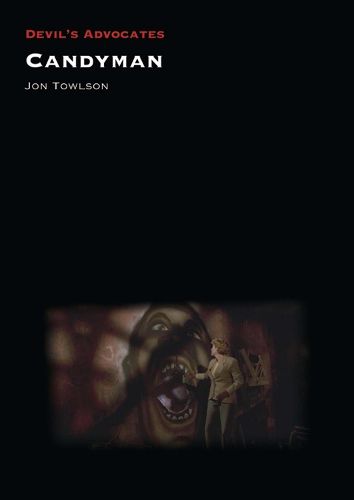Readings Newsletter
Become a Readings Member to make your shopping experience even easier.
Sign in or sign up for free!
You’re not far away from qualifying for FREE standard shipping within Australia
You’ve qualified for FREE standard shipping within Australia
The cart is loading…






When Candyman was released in 1992, Roger Ebert gave it his thumbs up, remarking that the film was scaring him with ideas and gore, rather than just gore. Indeed, Candyman is almost unique in 1990s horror cinema in that it tackles its sociopolitical themes head on. As critic Kirsten Moana Thompson has remarked, Candyman is the return of the repressed as national allegory : the film’s hook-handed killer of urban legend embodies a history of racism, miscegenation, lynching, and slavery, the taboo secrets of America’s past and present.
In this book, Jon Towlson considers how Candyman might be read both as a return of the repressed during the George H. W. Bush era, and as an example of nineties neoconservative horror. He traces the project’s development from its origins as a Clive Barker short story ( The Forbidden ); discusses the importance of its gritty real-life Cabrini-Green setting; and analyzes the film’s appropriation (and interrogation) of urban myth. The two official sequels (Candyman: Farewell to the Flesh [1995] and Candyman: Day of the Dead [1999]) are also considered, plus a number of other urban myth-inspired horror movies such as Bloody Mary (2006) and films in the Urban Legend franchise. The book features an in-depth interview with Candyman’s writer-director Bernard Rose.
$9.00 standard shipping within Australia
FREE standard shipping within Australia for orders over $100.00
Express & International shipping calculated at checkout
When Candyman was released in 1992, Roger Ebert gave it his thumbs up, remarking that the film was scaring him with ideas and gore, rather than just gore. Indeed, Candyman is almost unique in 1990s horror cinema in that it tackles its sociopolitical themes head on. As critic Kirsten Moana Thompson has remarked, Candyman is the return of the repressed as national allegory : the film’s hook-handed killer of urban legend embodies a history of racism, miscegenation, lynching, and slavery, the taboo secrets of America’s past and present.
In this book, Jon Towlson considers how Candyman might be read both as a return of the repressed during the George H. W. Bush era, and as an example of nineties neoconservative horror. He traces the project’s development from its origins as a Clive Barker short story ( The Forbidden ); discusses the importance of its gritty real-life Cabrini-Green setting; and analyzes the film’s appropriation (and interrogation) of urban myth. The two official sequels (Candyman: Farewell to the Flesh [1995] and Candyman: Day of the Dead [1999]) are also considered, plus a number of other urban myth-inspired horror movies such as Bloody Mary (2006) and films in the Urban Legend franchise. The book features an in-depth interview with Candyman’s writer-director Bernard Rose.